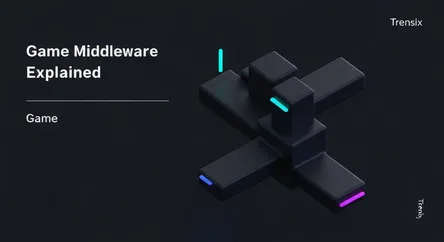Game
Game Middleware Explained

Discover what game middleware is and why it's a critical tool for modern developers, streamlining the creation of complex and immersive gaming experiences.
What is it?
Game middleware is specialized software that provides common functionalities for game developers, acting as a bridge between the game engine and the computer's operating system or hardware. Instead of building every system from scratch, developers can license middleware to handle specific tasks. Common examples include physics engines like Havok, audio engines such as FMOD or Wwise, and networking solutions for multiplayer. Essentially, it's a collection of pre-made tools and software components that can be integrated into a game project to save time and resources.
Why is it trending?
As games grow in complexity, the time and cost required to develop core systems from the ground up have skyrocketed. Middleware is trending because it offers a cost-effective and efficient solution. It allows studios of all sizes, from indie to AAA, to access powerful, pre-tested technology without massive upfront investment. This lets development teams focus their creative energy on unique gameplay, art, and story elements rather than reinventing the wheel for features like realistic physics or complex audio processing.
How does it affect people?
For game developers, middleware lowers the barrier to entry and accelerates production cycles, enabling them to create more ambitious games faster. For gamers, its impact is seen in the quality and consistency of their experiences. Widespread use of powerful middleware leads to games with more realistic physics, immersive 3D audio, stable online multiplayer, and other sophisticated features. It helps standardize high-quality components, resulting in richer and more technically polished games for players to enjoy across different platforms.